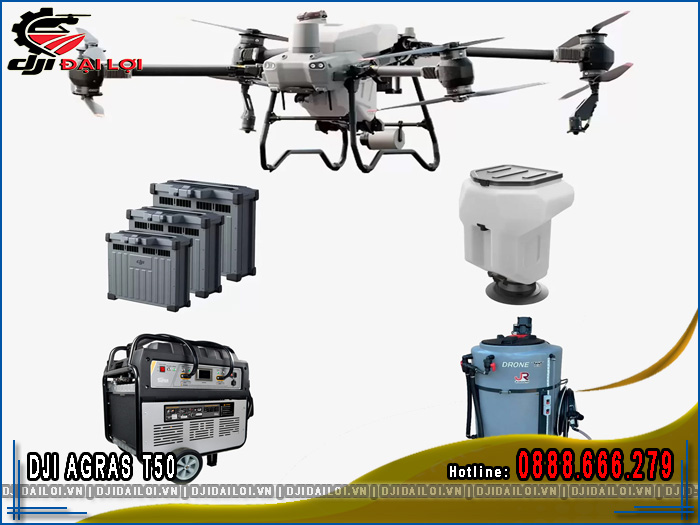









New to agricultural drones and not sure where to start? This comprehensive guide shares real-world experiences on how to effectively use pest control drones, including equipment selection, flight planning, safe operation, and proper maintenance for long-term efficiency.

A pest control drone-also known as an agricultural spraying drone-is an unmanned aerial vehicle (UAV) designed to automatically or semi-automatically spray pesticides or fertilizers on crops.
These drones use propellers to generate lift, GPS systems for mapping and navigation, and high-pressure nozzles for precise spraying. Integrated sensors and AI technology ensure even distribution and accurate application.
|
Criteria |
Drone Spraying |
Manual Spraying |
|---|---|---|
|
Precision |
High, adjustable flow rate |
Inaccurate dosage |
|
Labor Requirement |
1 operator |
3–4 workers |
|
Time Efficiency |
5–10 times faster |
Slow and labor-intensive |
|
Health Safety |
No direct chemical contact |
High risk of chemical exposure |
Using spraying drones can reduce labor by up to 90% compared to manual methods. A single drone can replace 4–6 workers per shift, ideal for large or hard-to-reach fields.
GPS-guided routes ensure consistent spraying without overlap or omission. Stable altitude improves chemical adherence to leaves, reducing environmental drift.
Operators avoid direct exposure to toxic substances and inhalation of fumes-common hazards in manual spraying.
Modern drones feature terrain-following sensors, obstacle-avoidance radar, and AI-based crop recognition to optimize dosage and accuracy at the row level.
Beginners often set flow rates too low or fly too high, reducing spray efficiency. Recommended altitude: 2.5–3.5 meters above crops, depending on type.
Flying in high winds or rain can cause drift or poor pesticide adhesion. Only operate in dry weather with wind speeds under 5 m/s.
Each field requires custom flight maps. Inaccurate mapping may lead to spraying off-target, causing significant losses.
Not all pesticides suit drone spraying. Use fine-particle, low-foam, low-residue formulations to avoid nozzle clogs and equipment damage.

Dji Agras T50
Set average flight speed to 4–6 m/s and flow rate to 4–6 L/min based on crop type. Reduce speed in strong winds to maintain spray accuracy.
Residual chemicals can corrode or block nozzles. Clean thoroughly to maintain performance.
Basic procedure:
LiPo drone batteries require careful handling:
Correct care prolongs battery life and reduces fire risks.
Smart drones like DJI Agras use integrated OS platforms. For best performance:
Every 3–6 months, take your drone for professional inspection:
Ideal for:
|
Category |
Own Drone |
Hire Service |
|---|---|---|
|
Initial Cost |
High (VND 150–300M) |
No investment needed |
|
Long-term Cost |
Low, full control |
Pay-per-hectare, vendor-dependent |
|
Flexibility |
High, on-demand spraying |
Schedule dependent |
Over 3 years, owning can cut costs by 30–50%, especially with full-capacity use.
|
Model |
Tank Size |
Coverage/hr |
Best for |
Highlights |
|---|---|---|---|---|
|
DJI T10 |
10L |
~5–7ha |
Small farms |
Lightweight, low cost, easy to fly |
|
DJI T20P |
20L |
~10–12ha |
Upgrading farms |
Terrain sensor, precise control |
|
DJI T25 |
25L |
~12–15ha |
Medium farms |
Radar, FPV camera, optimized performance |
|
DJI T30 |
30L |
~15–20ha |
Medium farms |
High-volume spraying, obstacle avoidance |
|
DJI T40 |
40L |
~20–30ha |
Cooperatives |
AI crop ID, multi-band RTK positioning |
|
DJI T50 |
50L |
~30–40ha |
Large farms |
Large tank, fast swap, omni radar |
|
DIY Vietnam Drones |
15–20L |
~6–10ha |
Budget farms |
Low price, limited AI, build-dependent |
According to DJI Vietnam dealers, the top-selling models are:
Why choose an authorized DJI dealer?
Smaller vendors may offer lower prices but carry higher risk for warranty and device issues.
With a DJI drone purchase, you receive:
Using pest control drones isn’t complicated if you follow best practices and avoid common mistakes. The right investment, careful planning, and routine maintenance will help you cut costs and boost productivity in the long run.